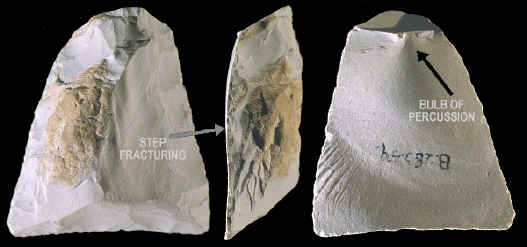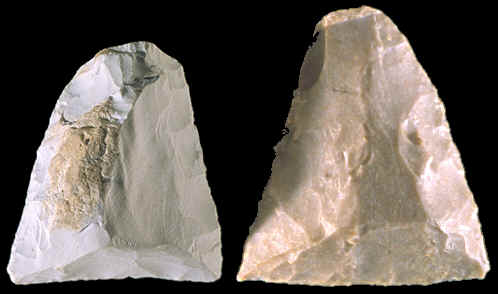|
ACHEULEAN
This small unifacial flake tool was discovered sometime during the 1953-1966
excavation of the Kalambo Falls site by J. Desmond Clark. It was found in the lowest archaeological sequence of the site
within the Acheulean horizon. The tools found in this early level date to
between 200,00 and 400,000 years ago. Although no bone material was found,
it's believed they were made by an archaic form of Homo sapiens living at
that time. This simple tool was made from a small flake
that was struck from a larger piece of chert. The bulb-of-percussion can
clearly be seen on the ventral (lower or smooth
flake side) side. The edges of this flake tool may
have been used for multiple tasks such as scraping or cutting. The edge
illustrated in the picture above shows step fracturing that could have
been caused by either shaping the edge during manufacture, later
retouching the edge for resharpening or from use wear. This tool was made
from good quality chert and it measures 1 3/4 inches (4.4 cm) long. |
|
|
|
|
THE KALAMBO FALLS SITE
The Kalambo Falls site is an open air site located in northeastern Zambia
along the Kalambo River and not far from the Kalambo Falls & Lake
Tanganyika. This site is known for its well defined stratified layers of
occupation beginning with Acheulean on the bottom and Iron Age horizons
near the surface. In fact, this site has one of the longest continuous
archaeological sequences of occupation known anywhere else in the world.
The Acheulean level is dated to between 200,000 and 400,000 years ago. |
|
|
"REFERENCES"
1972,
Howard, Calvin, "A Study of the Clear Fork Gouge", pp.51-59. |
|

